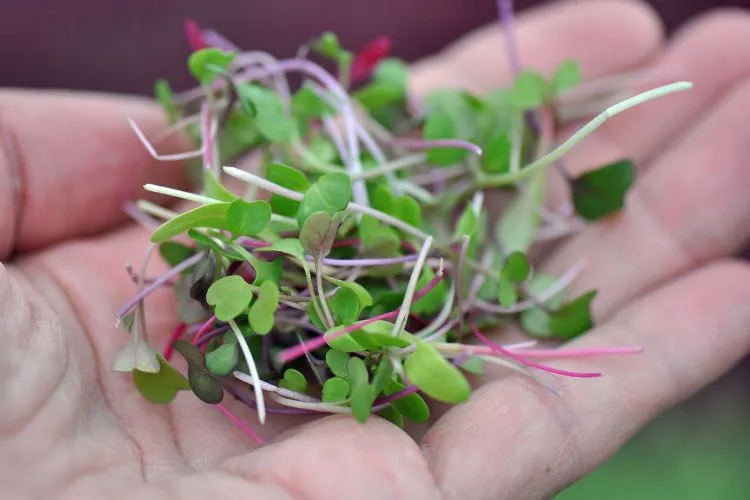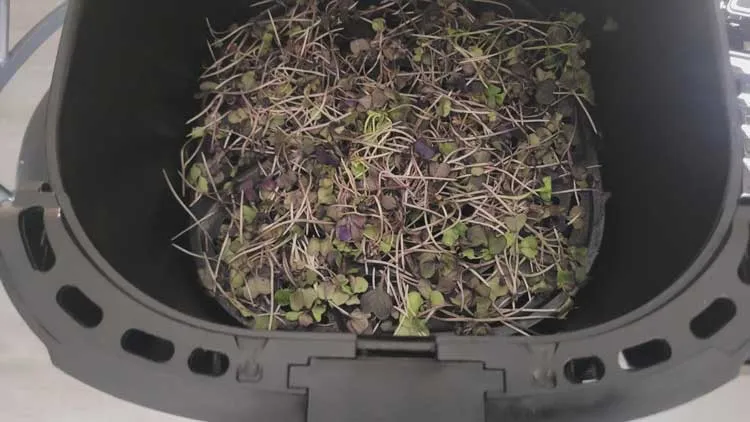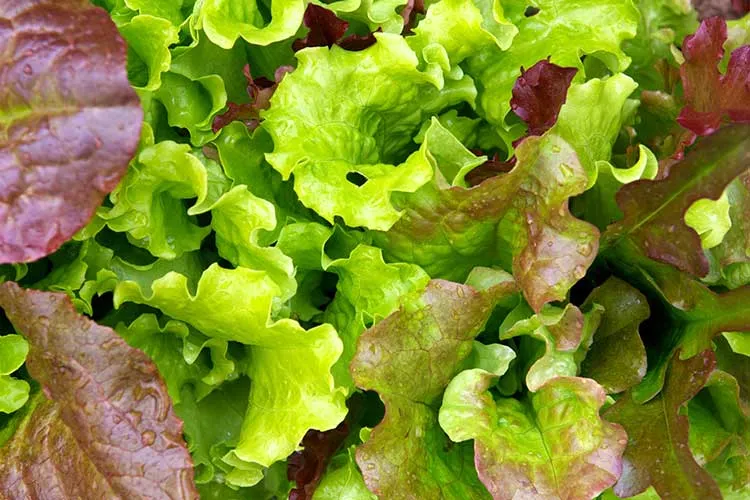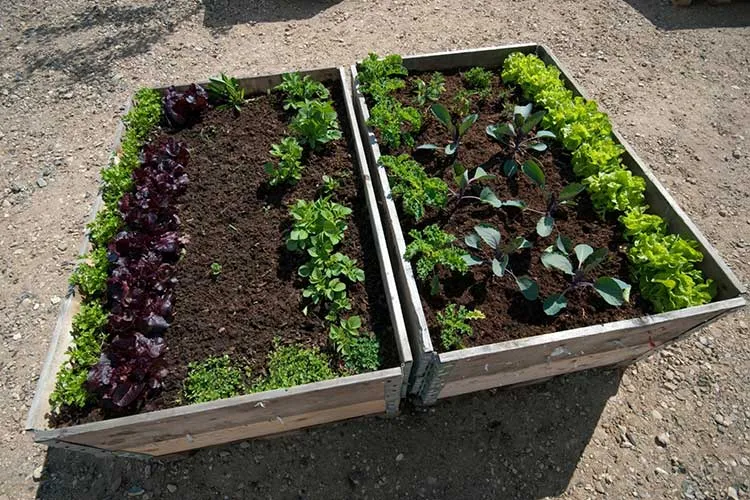Are you considering starting a microgreens business because you’ve heard it’s an easy, fast way to make money? Before you invest your time and resources, it’s crucial to understand the realities behind the hype. Many new growers dive in expecting instant profits, only to face unexpected challenges that drain their energy and wallets.
Microgreens farming has gained attention for its potential profitability. However, the daily responsibilities, market hurdles, and physical demands that often separate success from failure are often overlooked. If you’re concerned about whether this venture is as straightforward as advertised, this guide will provide the clarity you need. Learn why microgreens are so appealing—and the effort it takes to turn them into a sustainable business.
Is Microgreens a Profitable Business?
Microgreen farming can be highly profitable when approached with care and precision. These nutrient-dense plants can yield significant revenue in a relatively small space, making them an attractive option for urban growers or those with limited land. Depending on the variety, quality, and local market conditions, a single tray of microgreens can generate $20 to $50 in revenue. High-demand varieties, such as sunflowers, pea shoots, and radishes, often fetch premium prices in farmers’ markets, grocery stores, and restaurants.
However, profitability hinges on several factors. Market demand plays a crucial role; consistent buyers, such as chefs, retailers, or subscription box services, must sustain a steady income. Additionally, cost management is vital. Efficient use of seeds, water, and energy can significantly impact profit margins, especially for growers using artificial lighting systems. Proper planning can prevent overproduction, which leads to waste, and underproduction, which may strain customer relationships.
Skill level is another key factor in determining success. Growing microgreens requires a strong understanding of proper seeding density, watering techniques, and harvesting timelines. Mistakes in these areas can result in poor crop quality or even total loss. Farmers who take the time to perfect their techniques and refine their processes often see the best financial outcomes.
With careful planning and dedication, microgreen farming can yield impressive returns. Still, it requires consistent effort and a thorough understanding of the factors that influence profitability.
2. Debunking the “Quick and Easy Income” Myth
Microgreen farming offers a quick and effortless way to earn money. Still, this oversimplified narrative often frustrates beginners. While microgreens can produce fast-growing crops that mature in 7 to 21 days, success requires more than sprinkling seeds and waiting for harvest. Growing high-quality microgreens demands attention to detail, precise planning, and consistent effort.
Daily responsibilities include monitoring temperature, humidity, and light levels to ensure optimal growing conditions. Any deviation from these requirements can compromise the crop. For example, excessive humidity can lead to mold, while inadequate lighting hinders growth. Beyond environmental control, growers must carefully manage seeding densities, watering schedules, and harvest times to avoid overcrowding or underdeveloped greens.
Another aspect often overlooked is the time-sensitive nature of microgreens farming. Meeting deadlines for harvesting and delivering fresh produce is critical to customer trust and satisfaction. Unlike crops with longer growth cycles, microgreens spoil quickly, requiring immediate packaging and distribution. This time pressure adds a layer of logistical complexity.
Social media often presents an overly glamorous portrayal of microgreen farming, featuring bountiful trays of greens and promises of rapid profits. Achieving these results takes weeks or months of trial and error, financial investment, and a steep learning curve. For instance, dealing with pest issues, crop failures, or fluctuating market demands can be disheartening without proper preparation.
Success in microgreen farming comes from treating it as a serious business rather than a hobby. While it can be financially rewarding, the effort involved is far from “quick and easy.” Dedication to refining techniques, managing resources, and adapting to challenges is essential for turning this venture into a sustainable income source.
3. The Reality of Running a Microgreens Business
Growing Challenges
Growing microgreens successfully requires a high level of daily care and precision. The farmer must closely monitor each tray to ensure the right temperature, humidity, air circulation, and watering. Excessive fluctuations in these conditions can lead to poor germination, mold growth, or stunted plant growth. Maintaining humidity levels is crucial—too much moisture encourages fungal growth, while too little can dry out the crops.
Seeding and watering require practice. Overseeding trays can lead to overcrowding, which makes plants more susceptible to disease and limits airflow; conversely, under-seeding results in wasted space and lower yields. Proper watering techniques are equally important, as microgreens thrive in moist but not soggy conditions.
Timing is another critical factor. Harvesting too early results in underdeveloped greens that lack flavor and weight. At the same time, late harvesting can cause crops to become overly mature and less appealing to buyers. Each type of microgreen has its ideal growth timeline, requiring careful scheduling and tracking.
Cleanliness is non-negotiable when growing microgreens. Because they are often consumed raw, any contamination that occurs during the growing process poses significant food safety risks. Growers must regularly sanitize trays, tools, and workspaces to prevent bacterial contamination and pest infestations. Consistent cleaning protects crops and ensures compliance with food safety regulations.
Overall, successful growing requires vigilance, precision, and problem-solving. Each crop demands close attention, and even experienced growers face challenges such as mold outbreaks, inconsistent germination, or environmental fluctuations.
Physical and Labor Demands
Running a microgreens business requires significant physical effort, despite its small-scale nature. Tasks such as preparing trays, planting seeds, watering, and harvesting involve constant hands-on labor. These activities demand both precision and endurance, as mistakes during any stage can lead to crop failures or wasted resources. For example, evenly spreading seeds across the tray is crucial for uniform growth, while consistent watering helps prevent uneven germination.
Harvesting is one of the most labor-intensive parts of the process. Microgreens growers must carefully cut and package products to maintain freshness and quality. Since many customers expect flawless products, this step requires careful attention to detail. Depending on the size of the order, it can take hours.
Additionally, the physical toll of repetitive tasks adds up over time. Lifting and transporting trays, working in tight spaces, and standing for extended periods can be physically demanding, especially during peak harvest times. Proper ergonomics and organization can help reduce strain, but growers must be prepared for the physical demands of daily operations.
For those scaling their business, labor costs increase exponentially, often necessitating the hiring of additional staff to meet production goals. This makes microgreen farming a demanding venture that goes beyond what social media might lead one to believe.
Scaling and Space Limitations
Scaling a microgreens business introduces challenges, especially when working with limited space. While microgreens are known for their high yield in small areas, the amount of usable space directly affects production capacity. A few shelves or racks may suffice for a small operation, but expanding to meet growing demand requires significant infrastructure changes.
One major limitation is the availability of vertical and horizontal growing space. As demand increases, growers may need to add more shelving units or invest in larger racks, often requiring higher ceilings, better lighting setups, and additional ventilation. Without proper spacing, overcrowded growing environments can lead to airflow issues, increased humidity, and a higher risk of mold or disease outbreaks.
Scaling also requires more equipment, such as grow lights, trays, and water systems, all of which demand upfront investment. The costs can escalate quickly, especially if automation systems, such as timed irrigation or temperature controls, are needed to handle higher volumes efficiently. Additionally, expanding operations may involve leasing a larger facility or retrofitting a current space to meet food safety regulations, which would incur further expenses.
Labor and organization are other considerations when scaling. Managing more trays and larger harvests increases the complexity of the workflow. For example, tracking planting and harvesting schedules becomes more challenging with dozens or hundreds of trays to monitor. Tasks often require software tools or meticulous record-keeping to avoid mistakes.
While scaling can lead to higher profits, the investment in space, equipment, and labor means it’s not an overnight process. Growers must carefully plan their expansion to avoid overextending resources or producing more than the market can absorb. Success depends on striking a balance between increased production and sustainable operations.
Market and Sales Challenges
Selling microgreens can be just as challenging as growing them. Market demand for microgreens is often unpredictable, influenced by consumer preferences, seasonal changes, and competition. Establishing a consistent customer base requires effort and persistence, especially for new growers without an established reputation. Farmers’ markets, grocery stores, and restaurants are common outlets for sales. Still, each has its challenges, such as meeting specific volume or quality requirements.
Building relationships with buyers is crucial for success. Chefs, for instance, value consistent quality and timely deliveries. Missing deadlines or providing subpar products can damage these relationships. Additionally, some buyers may request customized orders, such as specific microgreen blends or packaging sizes, which adds complexity to the operation.
Marketing is another hurdle for microgreens farmers. Social media can help increase visibility, but converting online interest into regular sales takes time. Many growers also rely on word-of-mouth recommendations or direct outreach to build trust with local customers. Standing out in a competitive market often requires offering unique products or exceptional service, which can involve added costs or effort.
Customer feedback plays a big role in shaping sales strategies. For example, buyers may complain about greens wilting too quickly or lacking variety, forcing growers to improve packaging techniques or expand their offerings. Adapting to these demands takes flexibility and an openness to change.
Long-term success also depends on managing customer expectations. Not every harvest will be perfect; unexpected challenges, such as crop failures or shipping delays, can impact sales. A transparent approach and consistent communication help maintain trust and loyalty even during setbacks.
Financial Realities
The financial side of running a microgreens business involves more than upfront costs; it requires ongoing investments and patience to achieve profitability. Initial expenses, such as grow lights, trays, seeds, soil, and shelving units, can quickly add up. Depending on the scale, these costs may range from a few hundred to several thousand dollars. Additionally, growers require tools such as pH meters, fans for ventilation, and food-safe packaging, which further increase the startup budget.
Operating costs also need careful management. Electricity for grow lights and water for irrigation are recurring expenses that can impact profit margins; for growers using climate-controlled systems, heating or cooling costs can spike depending on the season. The more efficient the setup, the better the chances of controlling these expenses.
Turning a profit in microgreen farming takes time, especially during the initial learning phase, when mistakes can lead to wasted resources. On average, it may take several months to a year for the operation to become consistently profitable. For example, a small-scale grower selling at farmers’ markets may need to establish a regular customer base before seeing steady returns.
Success often depends on realistic financial planning and reinvesting early profits into the business. By tracking costs and refining processes, growers can gradually build a sustainable and profitable operation.
4. The Bottom Line: Who Is Suited for the Microgreens Business?
Microgreens farming is best suited for individuals who thrive in hands-on, detail-oriented work. Success in this industry requires patience, consistency, and a willingness to adapt to the challenges that arise. Those interested in agriculture, sustainable practices, or entrepreneurship are often well-suited for this venture. Still, personality traits such as attention to detail and problem-solving skills are equally important.
The physical nature of the work also requires growers to be comfortable with tasks such as lifting trays, standing for extended periods, and performing repetitive labor. A genuine interest in learning and improving techniques is crucial, especially since microgreen farming involves constant monitoring and fine-tuning to ensure the health of crops. Beginners should also be prepared for setbacks, such as crop failures or fluctuating market demands, and possess the resilience to troubleshoot and recover.
Having a customer-focused mindset is another key factor. Building trust with buyers, whether chefs, retailers, or consumers, requires strong communication skills and reliability. Meeting deadlines, maintaining product quality, and handling feedback are daily responsibilities that can significantly impact long-term success.
For those considering starting a business, beginning small is often the best approach. Testing the waters with a few trays, gaining experience, and gradually expanding can help manage risk while building skills and confidence. Individuals prepared to invest time, effort, and resources into their microgreen farming operation will find it a rewarding yet demanding opportunity.







